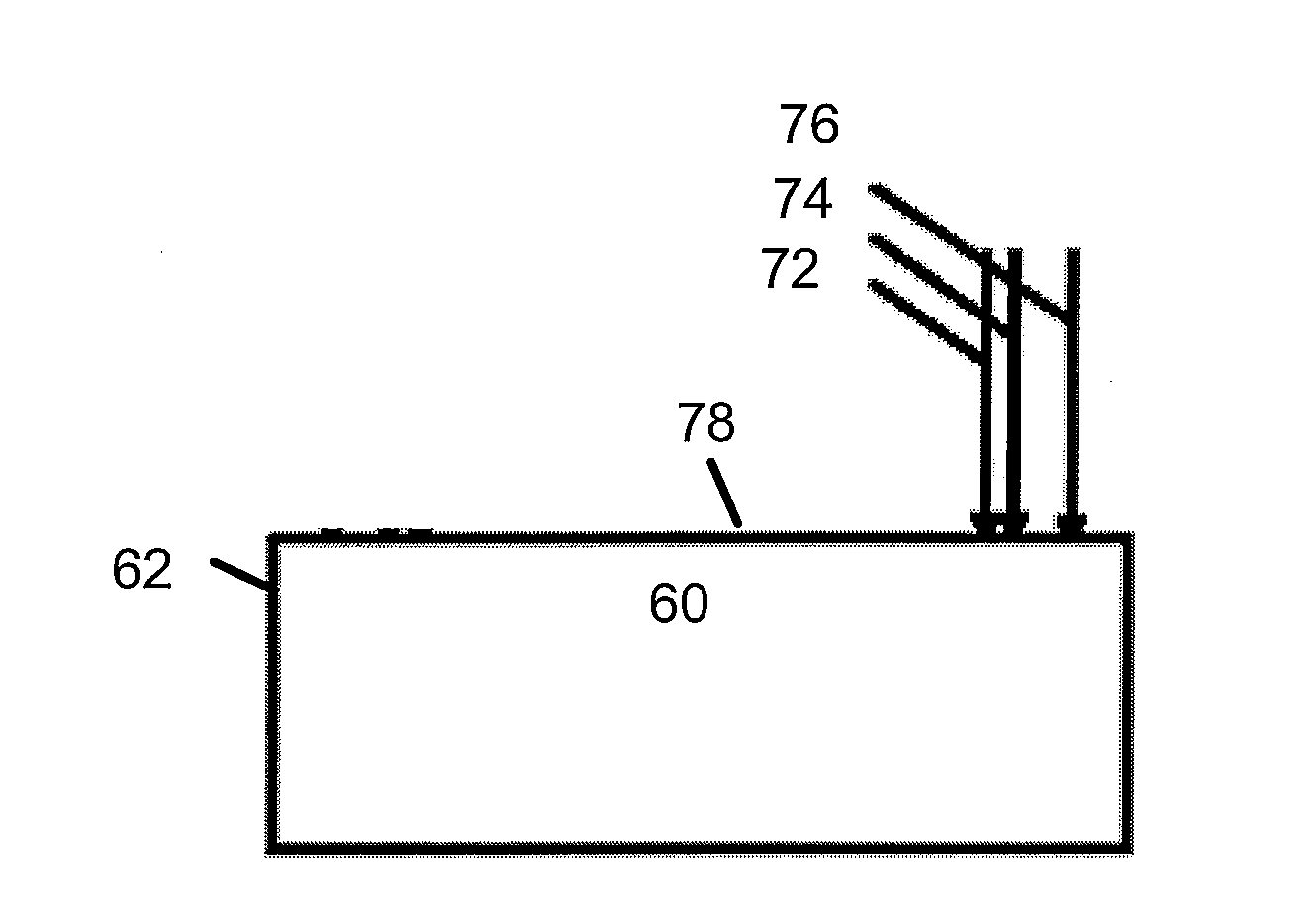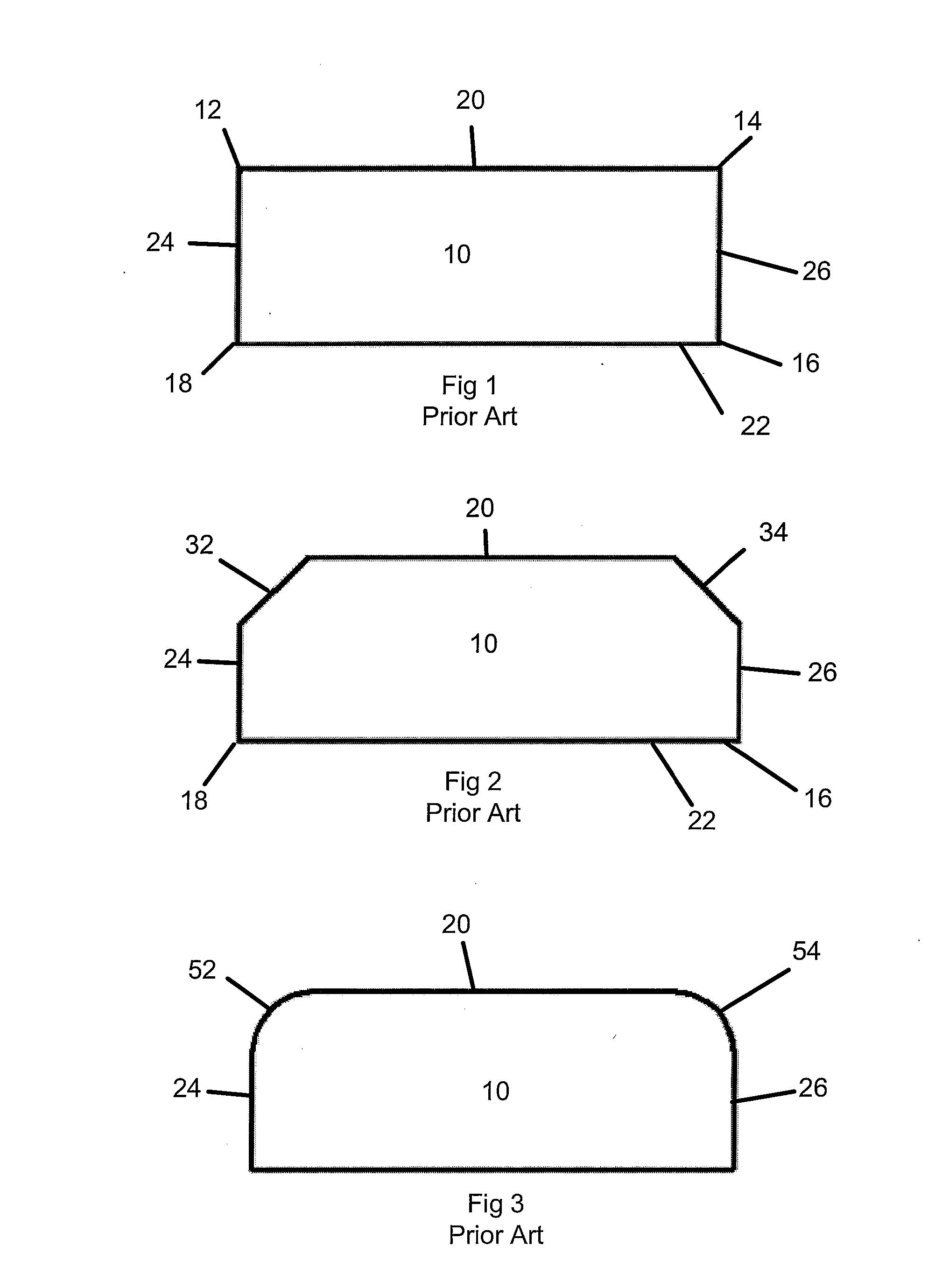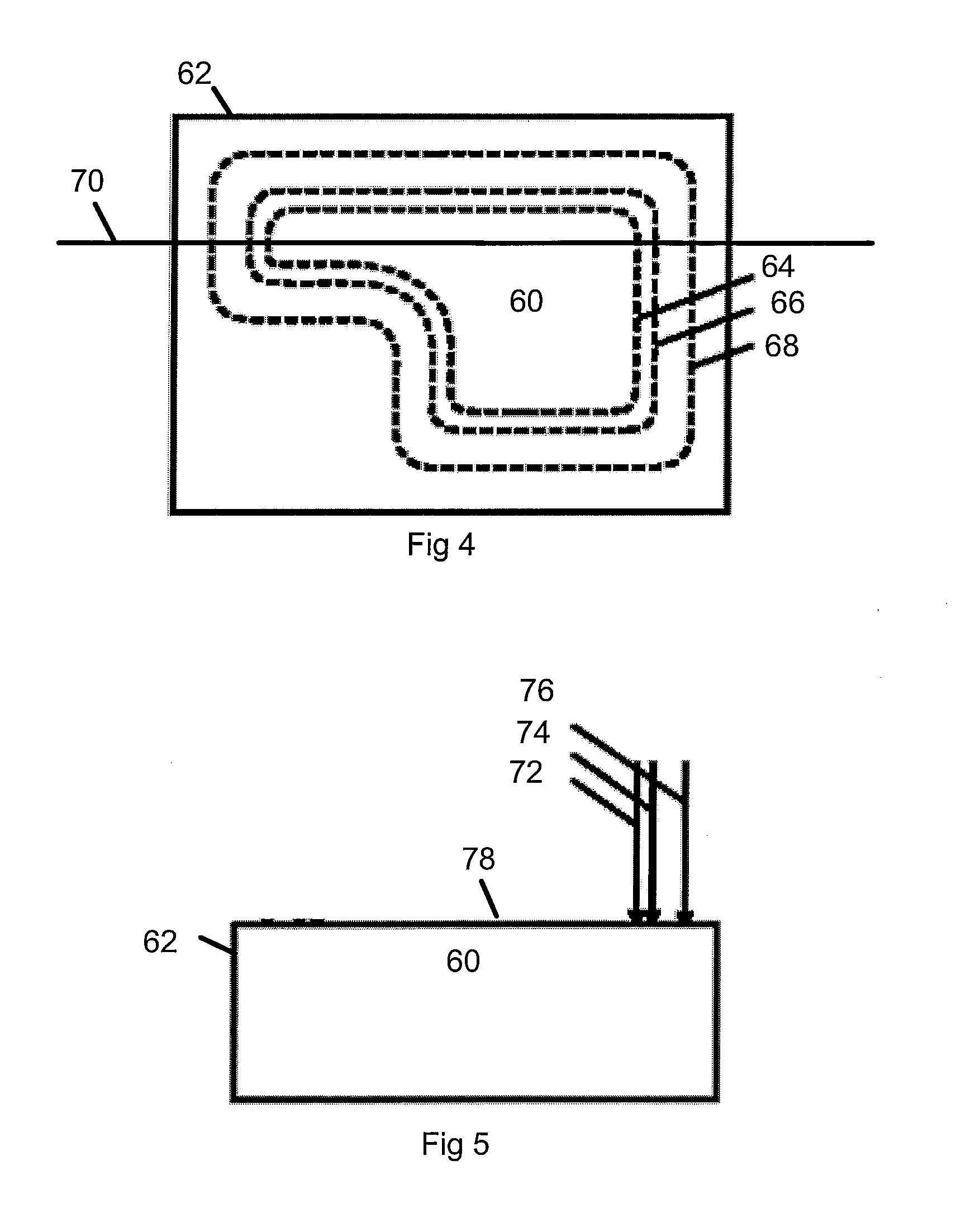Method for laser processing glass with a chamfered edge
a laser processing and edge technology, applied in glass making apparatus, manufacturing tools, welding/soldering/cutting articles, etc., can solve the problems of not having a method for creating a chamfer on the resulting edges in one manufacturing operation, not having a mechanical notch, etc., to achieve more control over the shape and size of the chamfer, and improve the quality of the finish. , the effect of improving the quality of the finish
- Summary
- Abstract
- Description
- Claims
- Application Information
AI Technical Summary
Benefits of technology
Problems solved by technology
Method used
Image
Examples
Embodiment Construction
[0035]One of the goals of the instant invention is to permit laser machining of chamfered features in glass or glass-like materials in one manufacturing operation. An exemplary machine that can produce a and control a laser beam capable of ablating glass and glass-like materials, fixture the materials and move the laser beam(s) with respect to the material is the MM5800 laser micromachining system produced by Electro Scientific Industries, Inc., Portland, Oreg., the assignee of the instant invention.
[0036]The laser beam can be either continuous wave (CW) or pulsed. Laser parameters which are controlled to provide the desired ablation rate include wavelength, average power, spatial distribution, spot size and speed of travel. In the case of pulsed lasers, pulse width, pulse energy, pulse temporal distribution and repetition rate can be controlled to provide the desired ablation. Laser wavelengths can range from infrared (IR), such as 10.6 micron wavelengths emitted by CO2 lasers down...
PUM
| Property | Measurement | Unit |
|---|---|---|
| Angle | aaaaa | aaaaa |
| Transparency | aaaaa | aaaaa |
Abstract
Description
Claims
Application Information
 Login to View More
Login to View More - R&D
- Intellectual Property
- Life Sciences
- Materials
- Tech Scout
- Unparalleled Data Quality
- Higher Quality Content
- 60% Fewer Hallucinations
Browse by: Latest US Patents, China's latest patents, Technical Efficacy Thesaurus, Application Domain, Technology Topic, Popular Technical Reports.
© 2025 PatSnap. All rights reserved.Legal|Privacy policy|Modern Slavery Act Transparency Statement|Sitemap|About US| Contact US: help@patsnap.com



